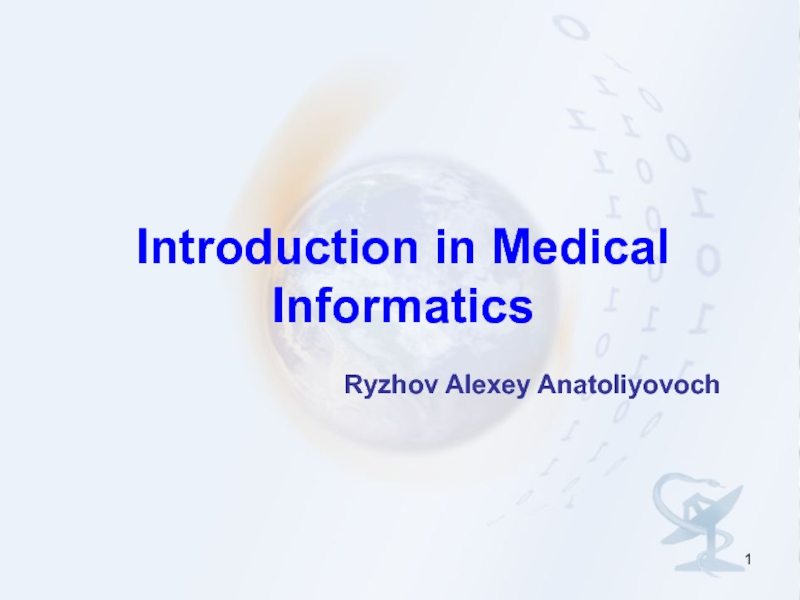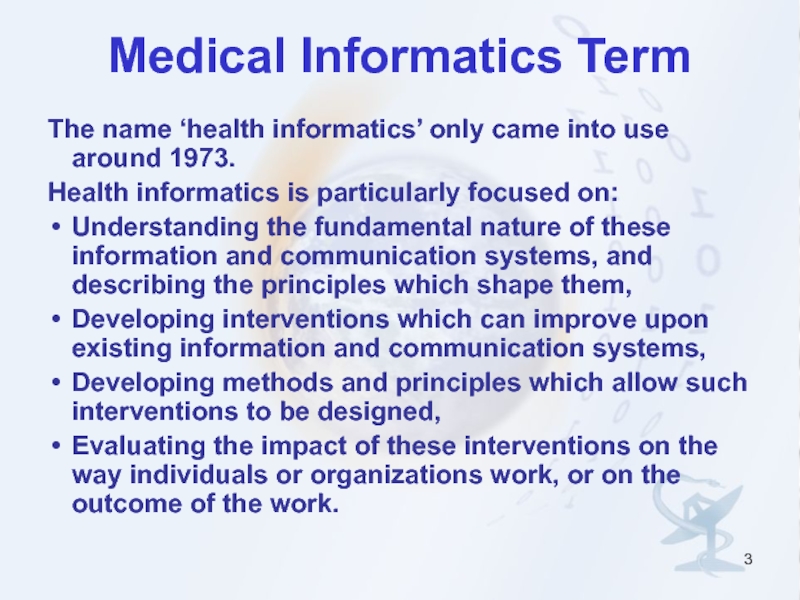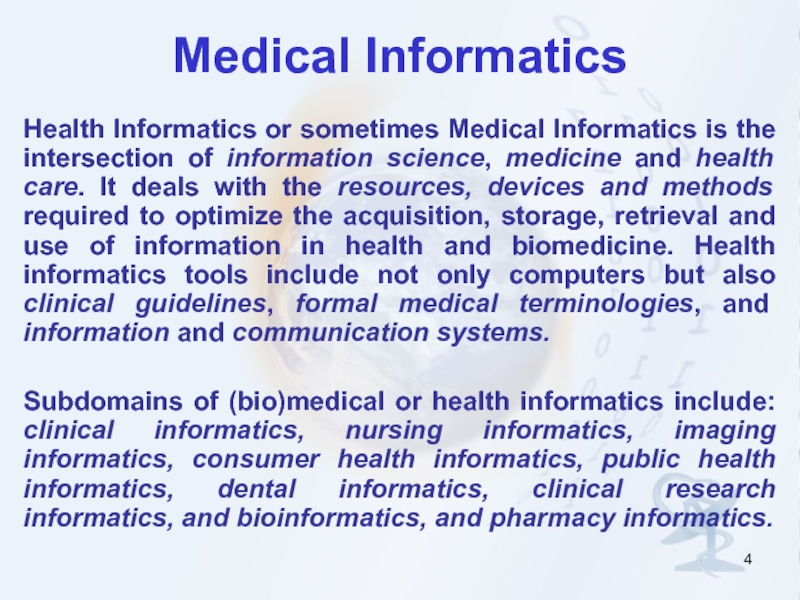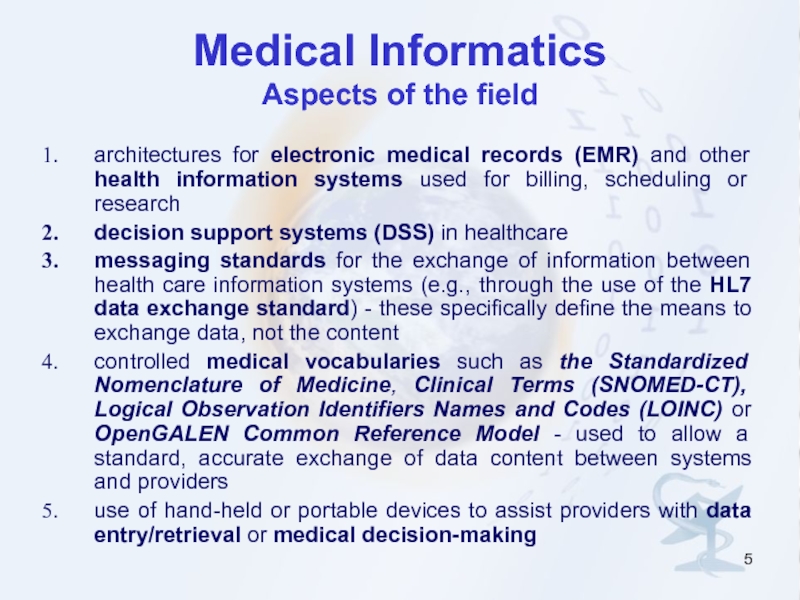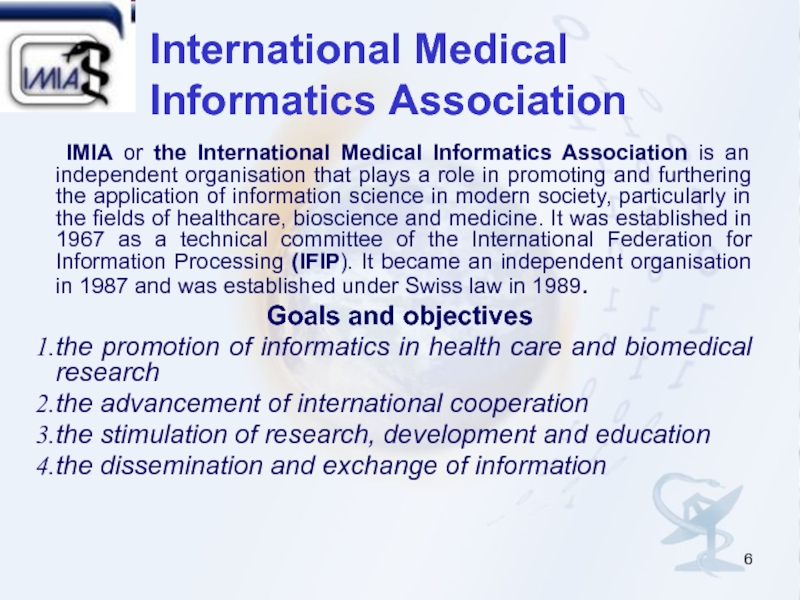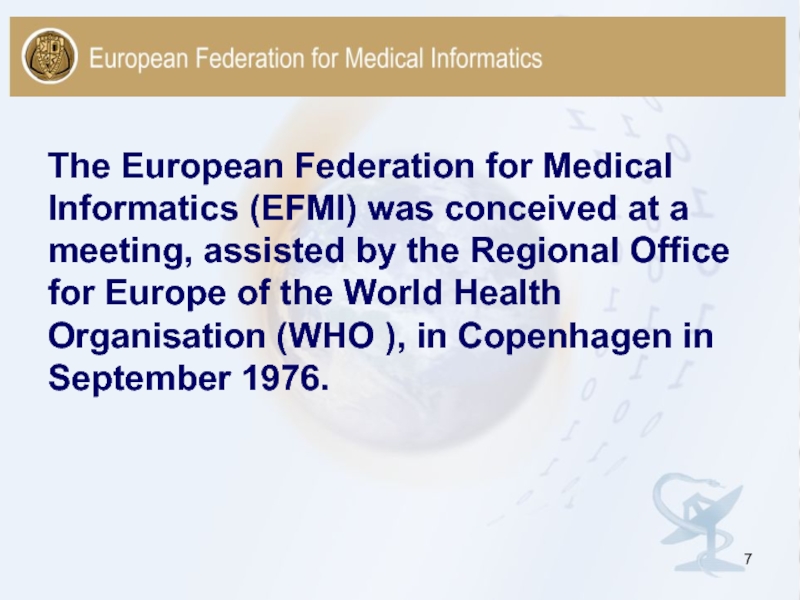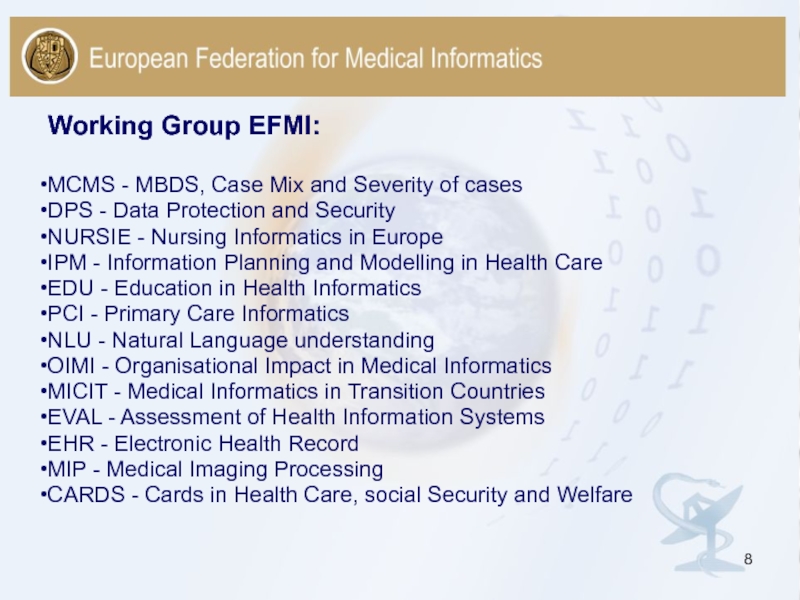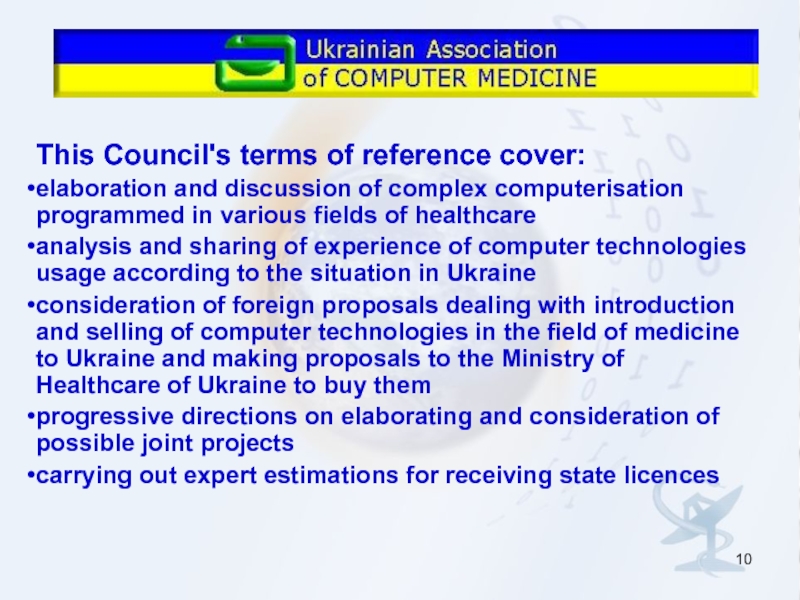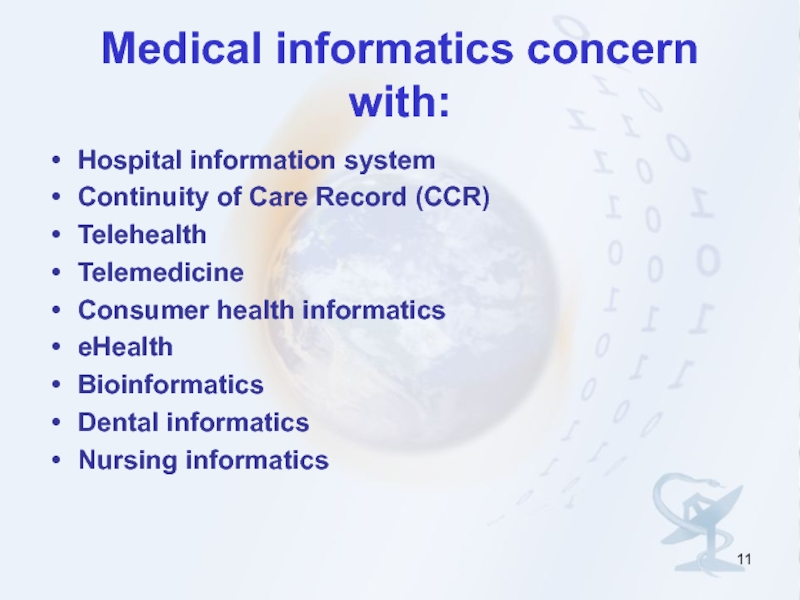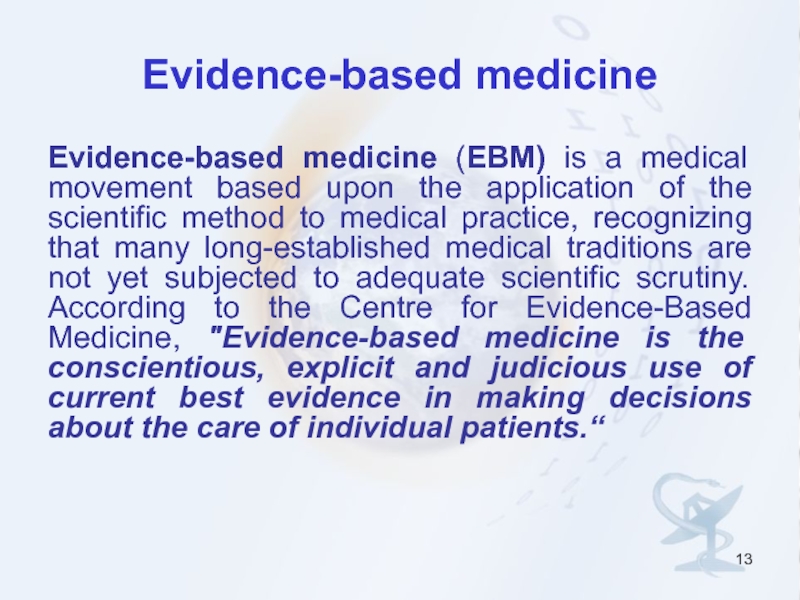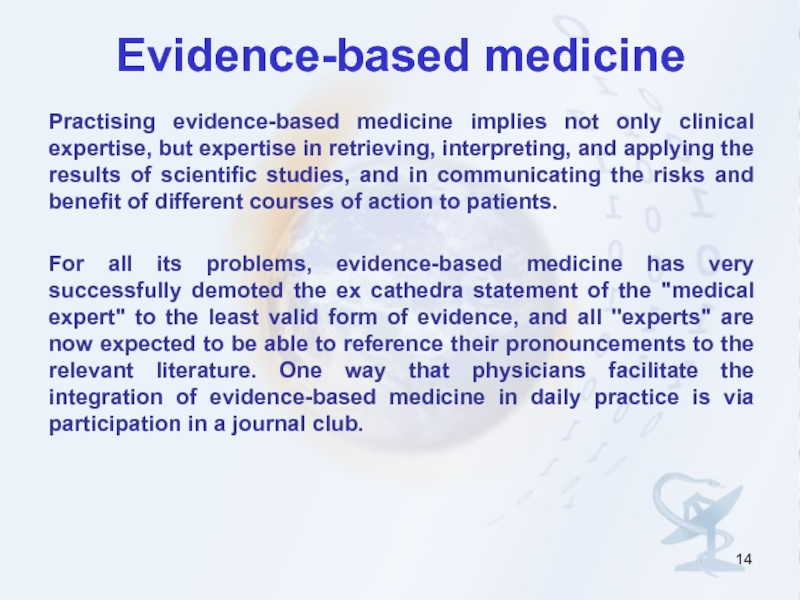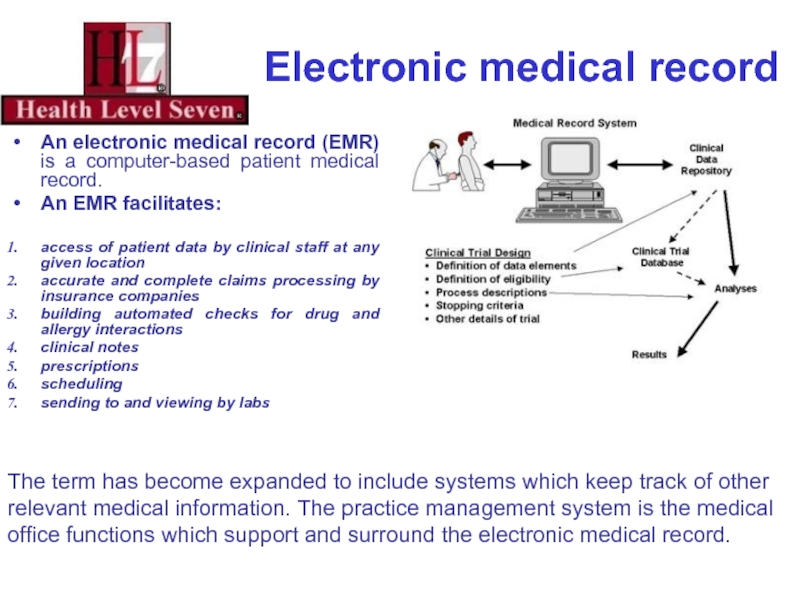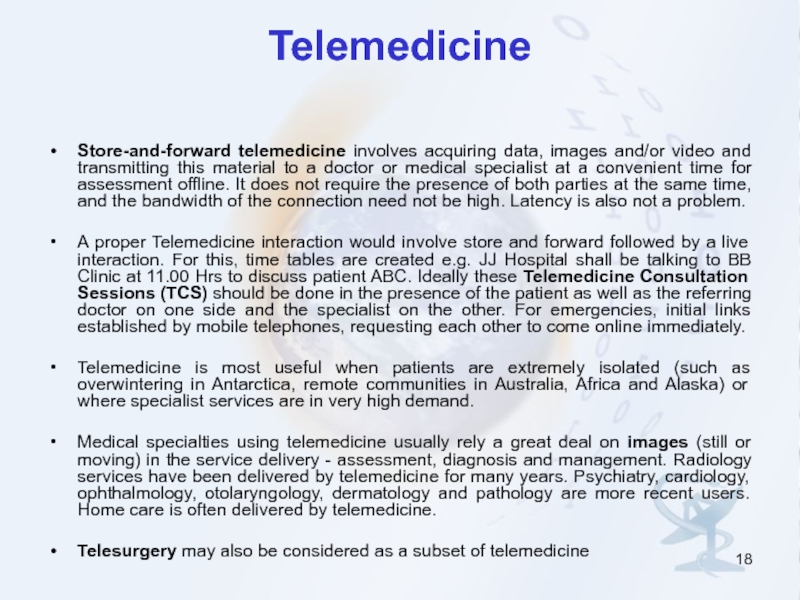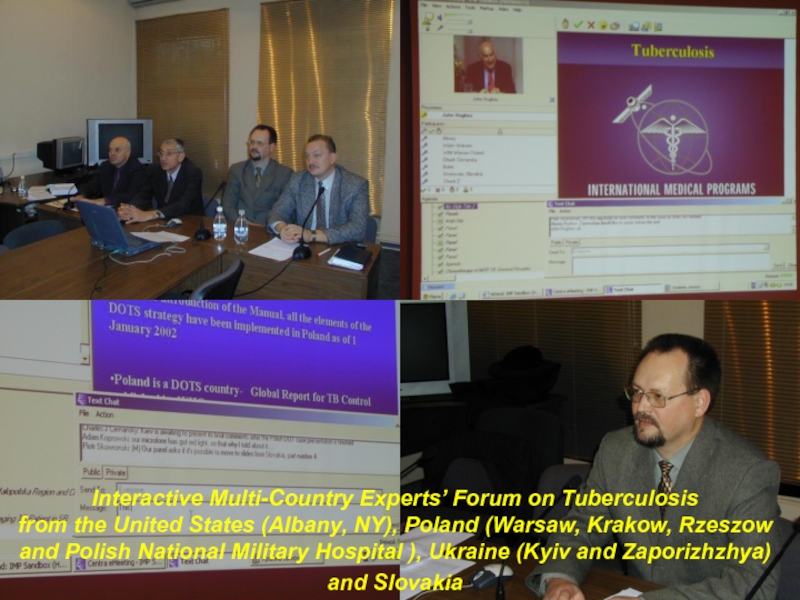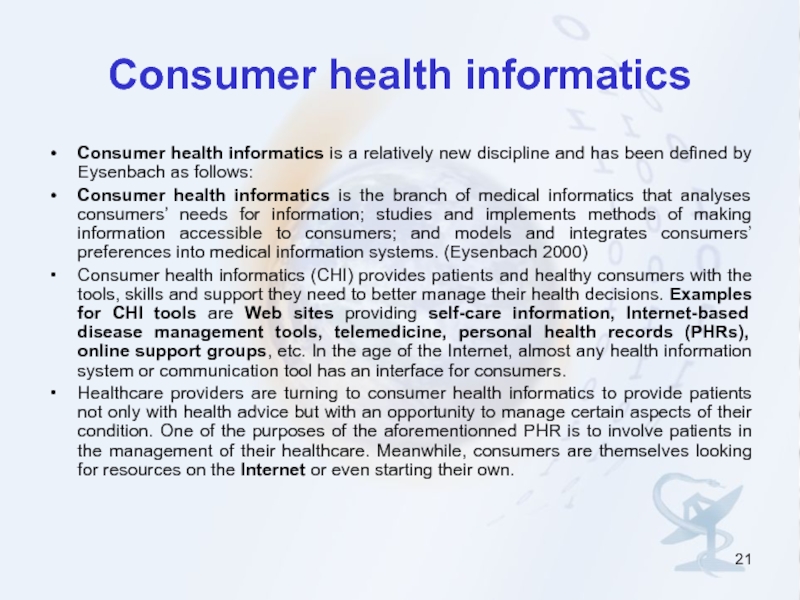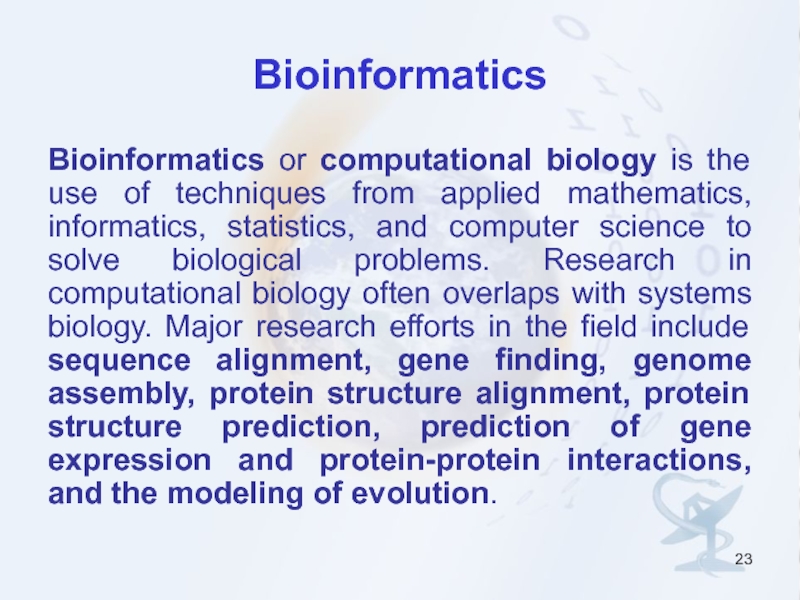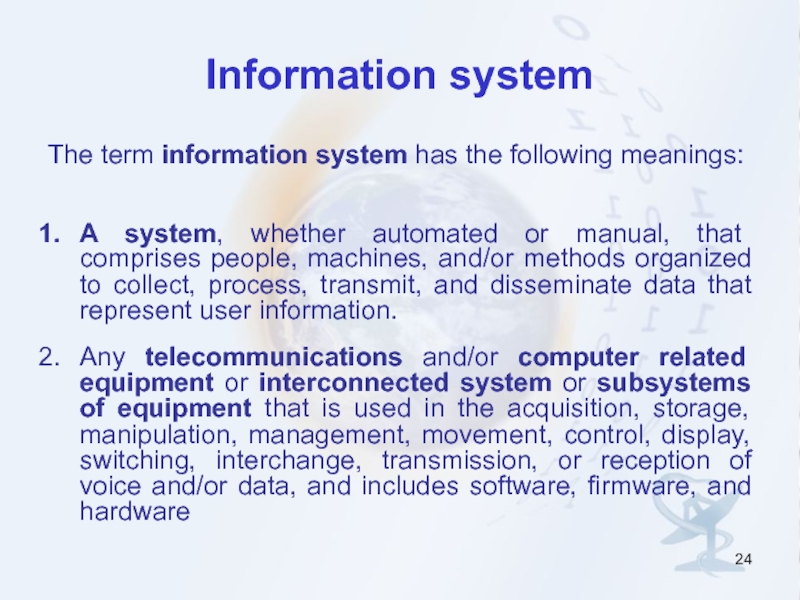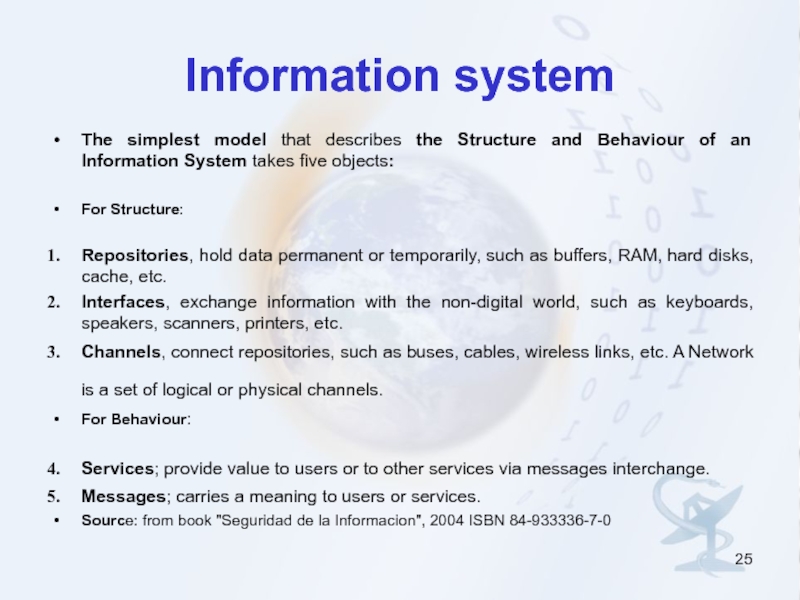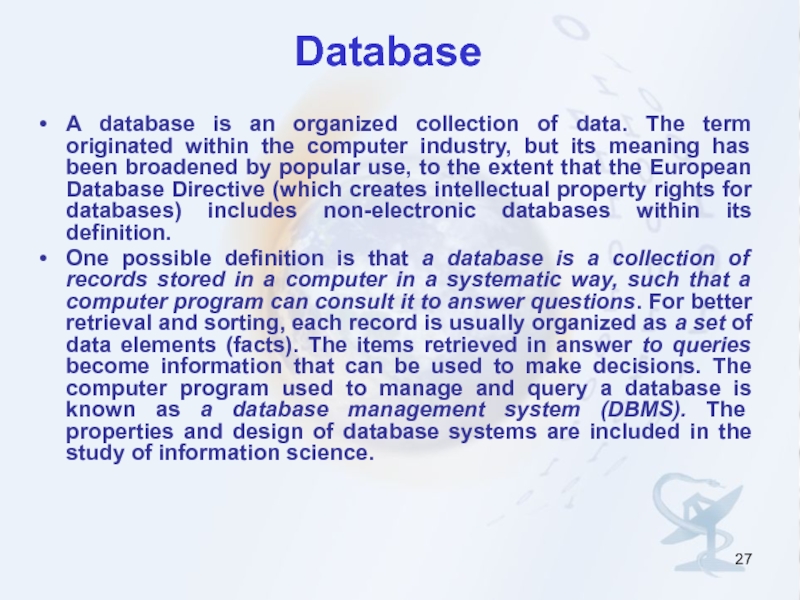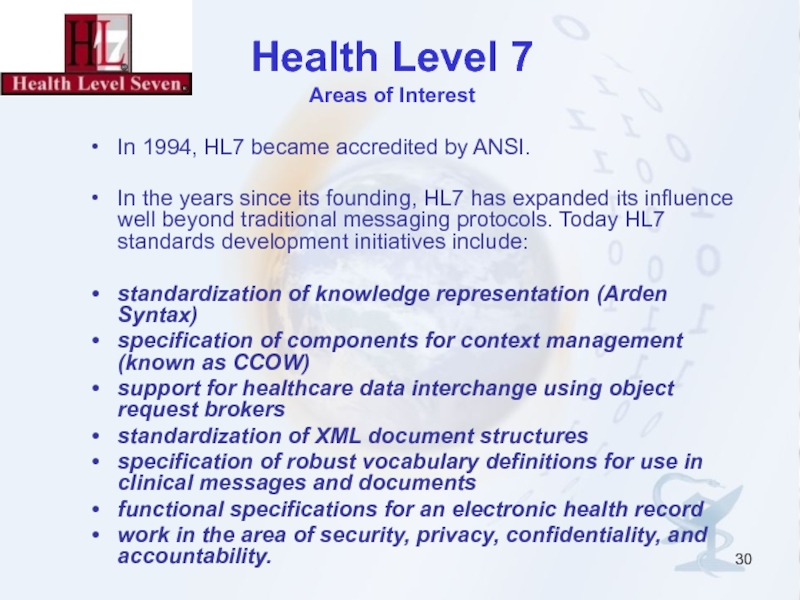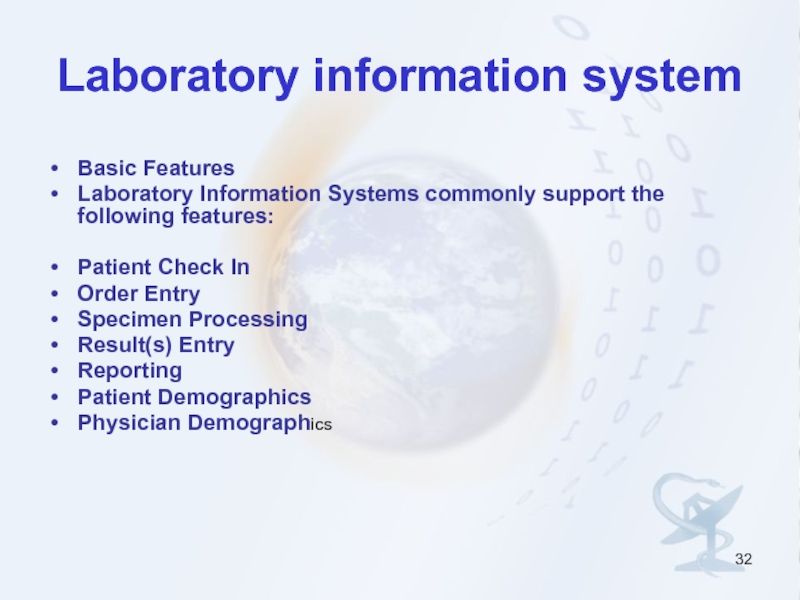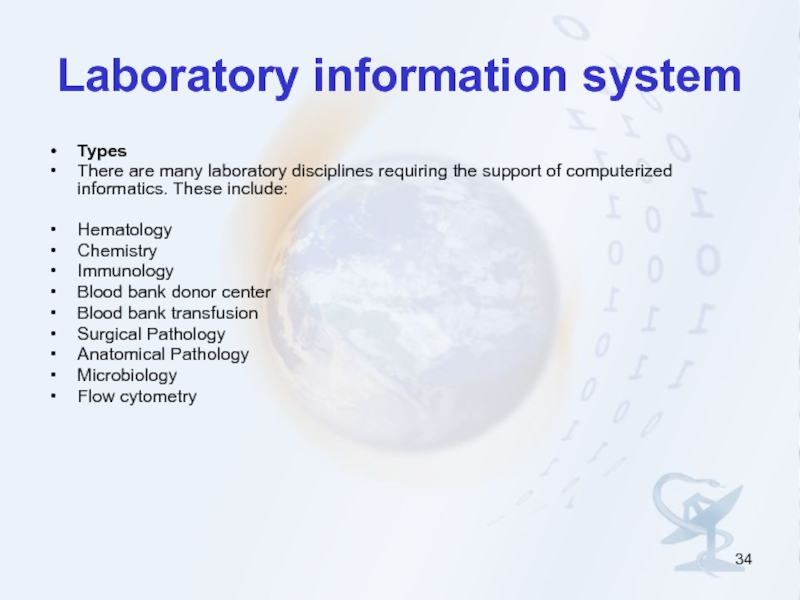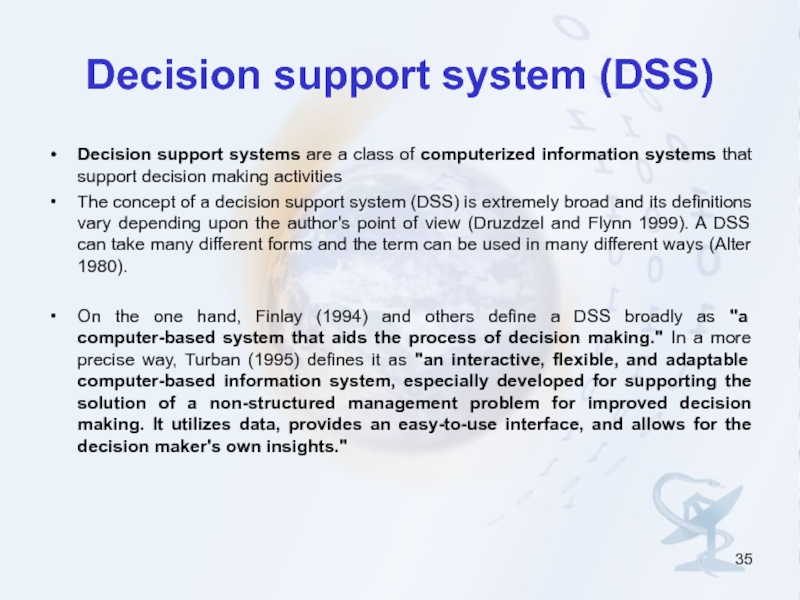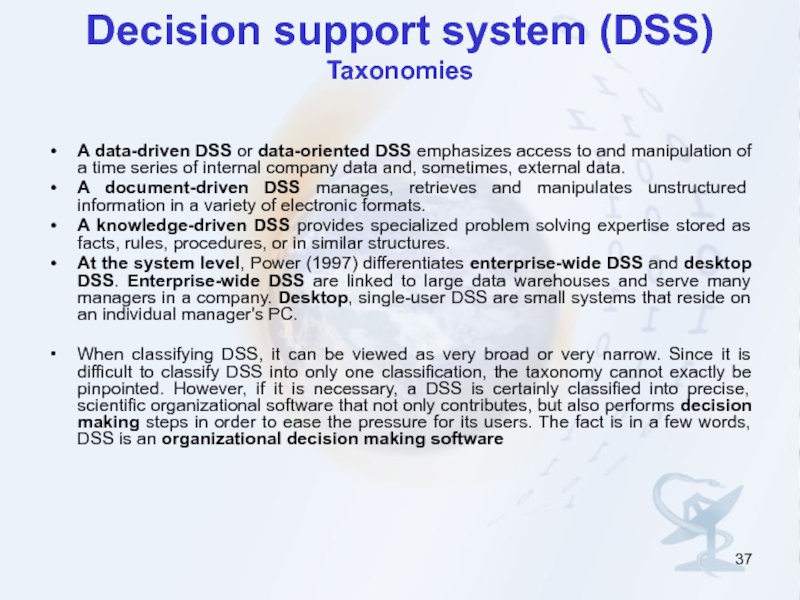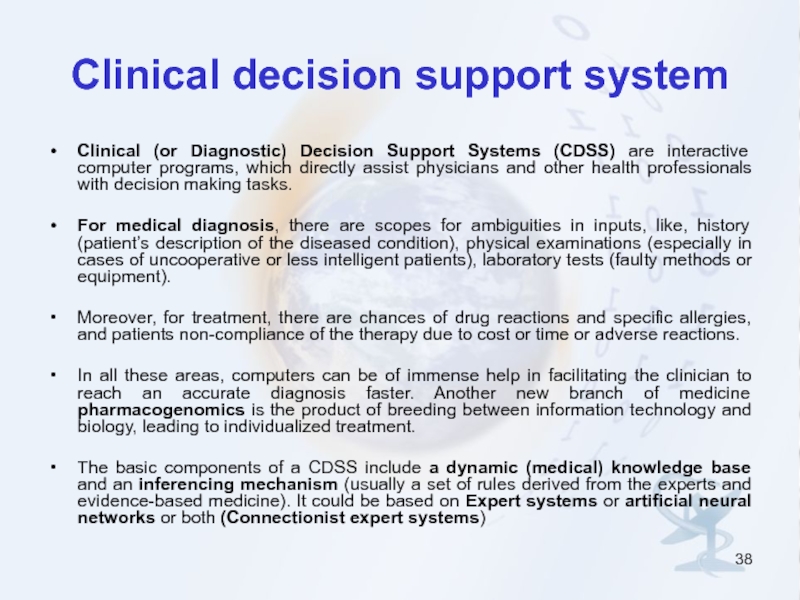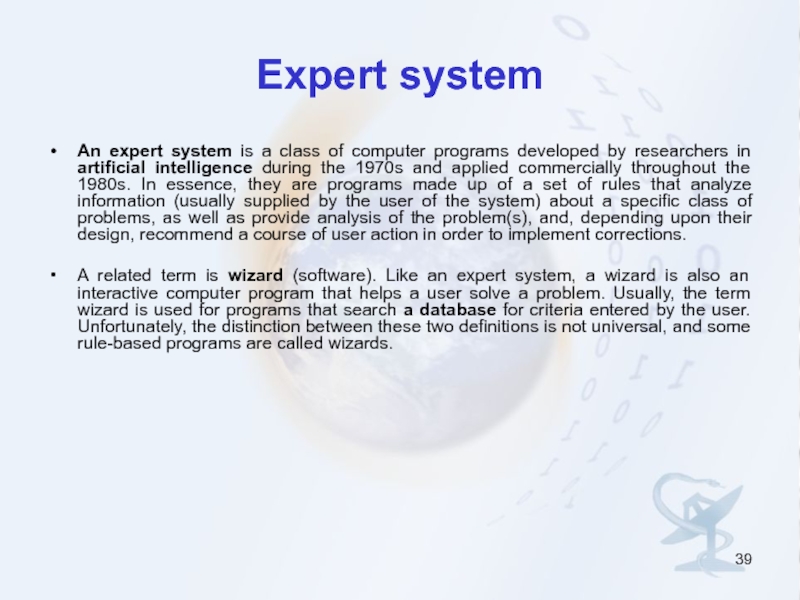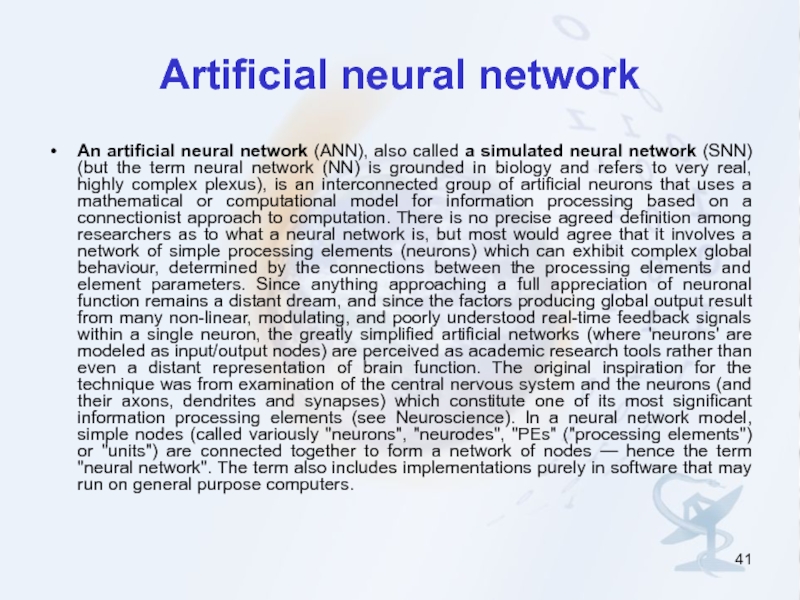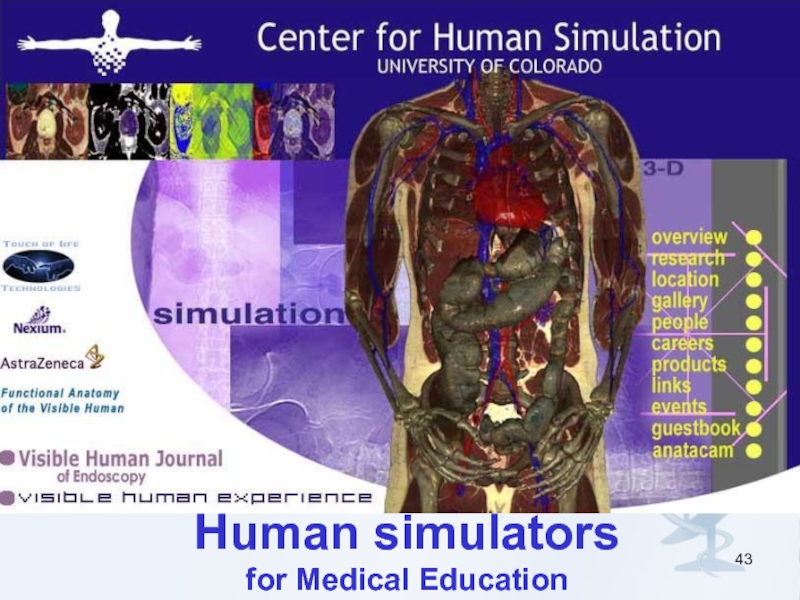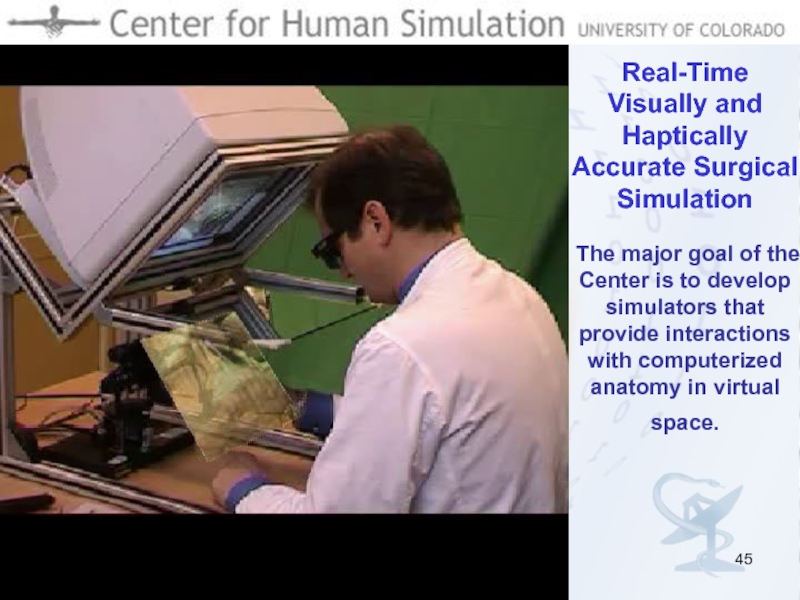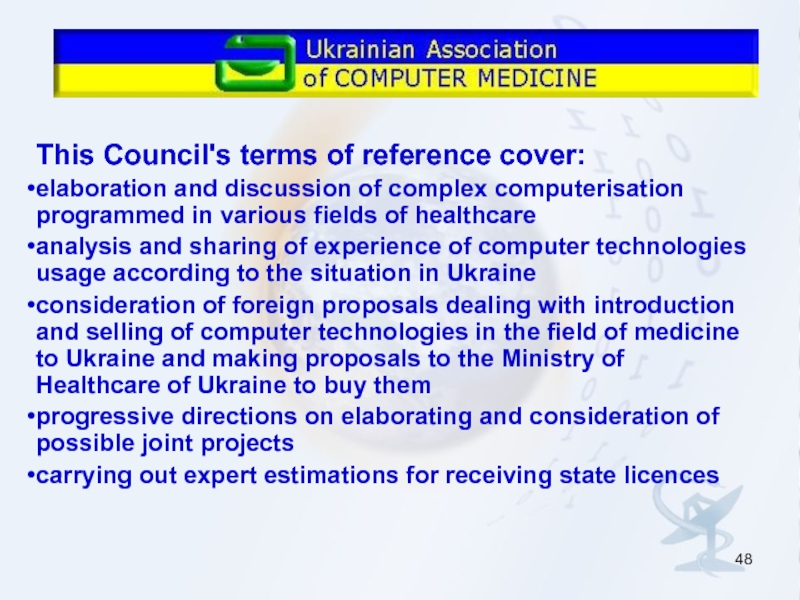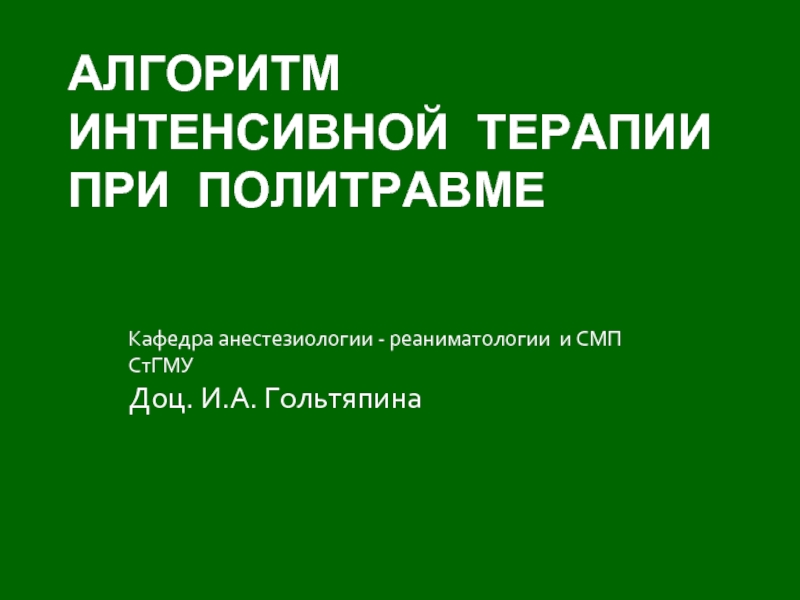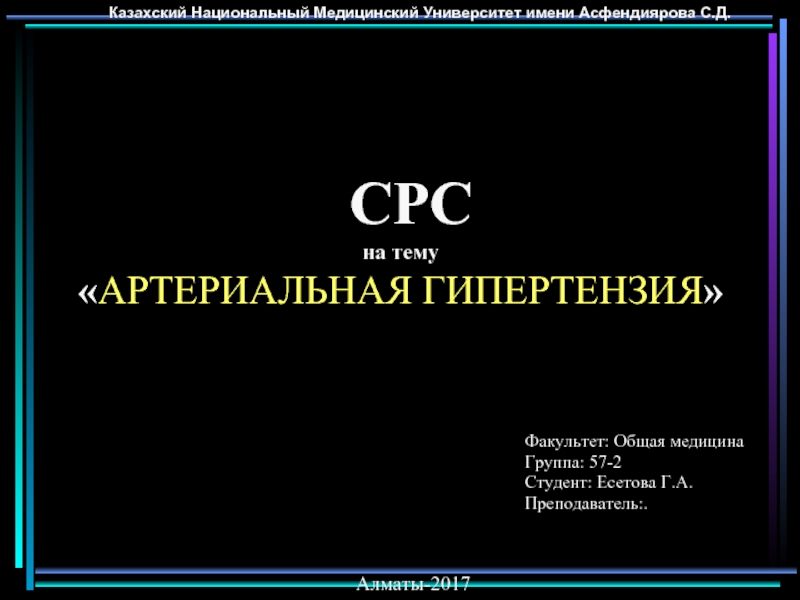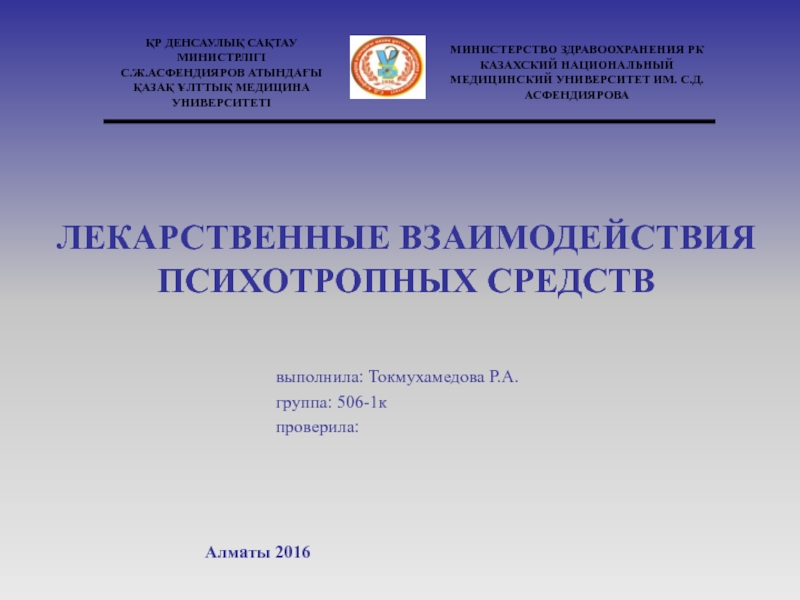- Главная
- Разное
- Дизайн
- Бизнес и предпринимательство
- Аналитика
- Образование
- Развлечения
- Красота и здоровье
- Финансы
- Государство
- Путешествия
- Спорт
- Недвижимость
- Армия
- Графика
- Культурология
- Еда и кулинария
- Лингвистика
- Английский язык
- Астрономия
- Алгебра
- Биология
- География
- Детские презентации
- Информатика
- История
- Литература
- Маркетинг
- Математика
- Медицина
- Менеджмент
- Музыка
- МХК
- Немецкий язык
- ОБЖ
- Обществознание
- Окружающий мир
- Педагогика
- Русский язык
- Технология
- Физика
- Философия
- Химия
- Шаблоны, картинки для презентаций
- Экология
- Экономика
- Юриспруденция
Introduction in Medical informatics презентация
Содержание
- 1. Introduction in Medical informatics
- 2. Medical Informatics Term The term medical informatics
- 3. Medical Informatics Term The name ‘health informatics’
- 4. Medical Informatics Health Informatics or sometimes Medical
- 5. Medical Informatics Aspects of the field
- 6. International Medical Informatics Association IMIA or
- 7. The European Federation for Medical Informatics (EFMI)
- 8. Working Group EFMI: MCMS - MBDS,
- 9. UACM was set up in August 1992
- 10. This Council's terms of reference cover: elaboration
- 11. Medical informatics concern with: Hospital information system
- 12. E-Health eHealth is a relatively recent term
- 13. Evidence-based medicine Evidence-based medicine (EBM) is a
- 14. Evidence-based medicine Practising evidence-based medicine implies not
- 15. Electronic medical record An electronic medical record
- 16. A health information system's automatic immunization data entry in the patient's admission module
- 17. Telemedicine The term Telemedicine is the
- 18. Telemedicine Store-and-forward telemedicine involves acquiring data,
- 19. Telehealth Telehealth is the
- 20. Interactive Multi-Country Experts’ Forum on Tuberculosis from
- 21. Consumer health informatics Consumer health informatics is
- 22. Biomedical Informatics Biomedical Informatics is the
- 23. Bioinformatics Bioinformatics or computational biology is the
- 24. Information system The term information system has
- 25. Information system The simplest model that describes
- 26. Information technology Technology is then the collection
- 27. Database A database is an organized collection
- 28. Hospital information system Hospital information system
- 29. Health Level 7 international healthcare standards
- 30. Health Level 7 Areas of Interest
- 31. Laboratory information system Laboratory information system
- 32. Laboratory information system Basic Features Laboratory Information
- 33. Laboratory information system Additional Features In addition
- 34. Laboratory information system Types There are many
- 35. Decision support system (DSS) Decision support systems
- 36. Decision support system (DSS) Taxonomies
- 37. Decision support system (DSS) Taxonomies
- 38. Clinical decision support system Clinical (or
- 39. Expert system An expert system is a
- 40. Types of problems solved by expert systems
- 41. Artificial neural network An artificial neural network
- 42. Artificial neural network Real life applications The
- 43. Human simulators for Medical Education
- 44. Real-Time Visually and Haptically Accurate Surgical Simulation http://www.uchsc.edu/sm/chs/research/pics/KneCutLg.mpg
- 45. Real-Time Visually and Haptically Accurate Surgical Simulation
- 47. Working Group EFMI: MCMS - MBDS,
- 48. This Council's terms of reference cover: elaboration
Слайд 2Medical Informatics Term
The term medical informatics dates from the second half
Слайд 3Medical Informatics Term
The name ‘health informatics’ only came into use around
Health informatics is particularly focused on:
Understanding the fundamental nature of these information and communication systems, and describing the principles which shape them,
Developing interventions which can improve upon existing information and communication systems,
Developing methods and principles which allow such interventions to be designed,
Evaluating the impact of these interventions on the way individuals or organizations work, or on the outcome of the work.
Слайд 4Medical Informatics
Health Informatics or sometimes Medical Informatics is the intersection of
Subdomains of (bio)medical or health informatics include: clinical informatics, nursing informatics, imaging informatics, consumer health informatics, public health informatics, dental informatics, clinical research informatics, and bioinformatics, and pharmacy informatics.
Слайд 5Medical Informatics
Aspects of the field
architectures for electronic medical records (EMR)
decision support systems (DSS) in healthcare
messaging standards for the exchange of information between health care information systems (e.g., through the use of the HL7 data exchange standard) - these specifically define the means to exchange data, not the content
controlled medical vocabularies such as the Standardized Nomenclature of Medicine, Clinical Terms (SNOMED-CT), Logical Observation Identifiers Names and Codes (LOINC) or OpenGALEN Common Reference Model - used to allow a standard, accurate exchange of data content between systems and providers
use of hand-held or portable devices to assist providers with data entry/retrieval or medical decision-making
Слайд 6International Medical Informatics Association
IMIA or the International Medical Informatics Association
Goals and objectives
the promotion of informatics in health care and biomedical research
the advancement of international cooperation
the stimulation of research, development and education
the dissemination and exchange of information
Слайд 7The European Federation for Medical Informatics (EFMI) was conceived at a
Слайд 8Working Group EFMI:
MCMS - MBDS, Case Mix and Severity of cases
DPS
NURSIE - Nursing Informatics in Europe
IPM - Information Planning and Modelling in Health Care
EDU - Education in Health Informatics
PCI - Primary Care Informatics
NLU - Natural Language understanding
OIMI - Organisational Impact in Medical Informatics
MICIT - Medical Informatics in Transition Countries
EVAL - Assessment of Health Information Systems
EHR - Electronic Health Record
MIP - Medical Imaging Processing
CARDS - Cards in Health Care, social Security and Welfare
Слайд 9UACM was set up in August 1992 in Kharkiv, where the
UACM became a national member of International Medical Informatics Association (IMIA) in September 1993 (Kyoto, Japan).
Слайд 10This Council's terms of reference cover:
elaboration and discussion of complex computerisation
analysis and sharing of experience of computer technologies usage according to the situation in Ukraine
consideration of foreign proposals dealing with introduction and selling of computer technologies in the field of medicine to Ukraine and making proposals to the Ministry of Healthcare of Ukraine to buy them
progressive directions on elaborating and consideration of possible joint projects
carrying out expert estimations for receiving state licences
Слайд 11Medical informatics concern with:
Hospital information system
Continuity of Care Record (CCR)
Telehealth
Telemedicine
Consumer health informatics
eHealth
Bioinformatics
Dental informatics
Nursing informatics
Слайд 12E-Health
eHealth is a relatively recent term for health care practice which
Electronic Medical Records
Telemedicine
Evidence Based Medicine
Citizen-oriented Information Provision
Specialist-oriented Information Provision
Virtual healthcare teams
Слайд 13Evidence-based medicine
Evidence-based medicine (EBM) is a medical movement based upon the
Слайд 14Evidence-based medicine
Practising evidence-based medicine implies not only clinical expertise, but expertise
For all its problems, evidence-based medicine has very successfully demoted the ex cathedra statement of the "medical expert" to the least valid form of evidence, and all "experts" are now expected to be able to reference their pronouncements to the relevant literature. One way that physicians facilitate the integration of evidence-based medicine in daily practice is via participation in a journal club.
Слайд 15Electronic medical record
An electronic medical record (EMR) is a computer-based patient
An EMR facilitates:
access of patient data by clinical staff at any given location
accurate and complete claims processing by insurance companies
building automated checks for drug and allergy interactions
clinical notes
prescriptions
scheduling
sending to and viewing by labs
The term has become expanded to include systems which keep track of other relevant medical information. The practice management system is the medical office functions which support and surround the electronic medical record.
Слайд 16A health information system's automatic immunization data entry in the patient's
Слайд 17Telemedicine
The term Telemedicine is the delivery of medicine at a distance.
Definition
A more extensive definition is that it is the use of modern telecommunication and information technologies for the provision of clinical care to individuals located at a distance and to the transmission of information to provide that care.
The terms e-health and tele-health are at times interchanged with telemedicine.
There are two basic forms of telemedicine in its current implementation: live, and store-and-forward. There is of course more to telemedicine, but this simplistic application is fast becoming ubiquitous.
Live telemedicine could be a telephone call, but more typically refers to a videoconference link. This requires the presence of both parties at the same time and a high-bandwidth, low-latency connection. At a minimum audio and video are involved, with remote tactile support sometimes also being present.
Слайд 18Telemedicine
Store-and-forward telemedicine involves acquiring data, images and/or video and transmitting this
A proper Telemedicine interaction would involve store and forward followed by a live interaction. For this, time tables are created e.g. JJ Hospital shall be talking to BB Clinic at 11.00 Hrs to discuss patient ABC. Ideally these Telemedicine Consultation Sessions (TCS) should be done in the presence of the patient as well as the referring doctor on one side and the specialist on the other. For emergencies, initial links established by mobile telephones, requesting each other to come online immediately.
Telemedicine is most useful when patients are extremely isolated (such as overwintering in Antarctica, remote communities in Australia, Africa and Alaska) or where specialist services are in very high demand.
Medical specialties using telemedicine usually rely a great deal on images (still or moving) in the service delivery - assessment, diagnosis and management. Radiology services have been delivered by telemedicine for many years. Psychiatry, cardiology, ophthalmology, otolaryngology, dermatology and pathology are more recent users. Home care is often delivered by telemedicine.
Telesurgery may also be considered as a subset of telemedicine
Слайд 19Telehealth
Telehealth is the delivery of health related services,
Telehealth can refer to:
Transmission of medical images for diagnosis (referred to as store and forward telehealth)
Groups or individuals exchanging health services or education live via videoconference (real-time telehealth)
Health advice by telephone
Store and forward telehealth (for example teleradiology) is an established way of accessing a specialist opinion without needing to be in the same room. In most store and forward examples an immediate response is not critical.
Real time telehealth (for example telepsychiatry) uses videoconferencing and is an established way of health providers and consumers interacting face to face in real time more often, with whomever they need and on an ad-hoc basis.
Слайд 20Interactive Multi-Country Experts’ Forum on Tuberculosis
from the United States (Albany, NY),
Слайд 21Consumer health informatics
Consumer health informatics is a relatively new discipline and
Consumer health informatics is the branch of medical informatics that analyses consumers’ needs for information; studies and implements methods of making information accessible to consumers; and models and integrates consumers’ preferences into medical information systems. (Eysenbach 2000)
Consumer health informatics (CHI) provides patients and healthy consumers with the tools, skills and support they need to better manage their health decisions. Examples for CHI tools are Web sites providing self-care information, Internet-based disease management tools, telemedicine, personal health records (PHRs), online support groups, etc. In the age of the Internet, almost any health information system or communication tool has an interface for consumers.
Healthcare providers are turning to consumer health informatics to provide patients not only with health advice but with an opportunity to manage certain aspects of their condition. One of the purposes of the aforementionned PHR is to involve patients in the management of their healthcare. Meanwhile, consumers are themselves looking for resources on the Internet or even starting their own.
Слайд 22 Biomedical Informatics
Biomedical Informatics is the interdisciplinary science that deals with
Слайд 23Bioinformatics
Bioinformatics or computational biology is the use of techniques from applied
Слайд 24Information system
The term information system has the following meanings:
A system, whether
Any telecommunications and/or computer related equipment or interconnected system or subsystems of equipment that is used in the acquisition, storage, manipulation, management, movement, control, display, switching, interchange, transmission, or reception of voice and/or data, and includes software, firmware, and hardware
Слайд 25Information system
The simplest model that describes the Structure and Behaviour of
For Structure:
Repositories, hold data permanent or temporarily, such as buffers, RAM, hard disks, cache, etc.
Interfaces, exchange information with the non-digital world, such as keyboards, speakers, scanners, printers, etc.
Channels, connect repositories, such as buses, cables, wireless links, etc. A Network is a set of logical or physical channels.
For Behaviour:
Services; provide value to users or to other services via messages interchange.
Messages; carries a meaning to users or services.
Source: from book "Seguridad de la Informacion", 2004 ISBN 84-933336-7-0
Слайд 26Information technology
Technology is then the collection of tools plus the knowledge
“The number of information systems, computing devices, data archives and other IT resources that are interconnected in complex, distributed systems is exploding. The resulting systems have the potential to transform both science and engineering research (e.g., with environmental and geological systems, remote observing systems, or embedded sensor systems for research on materials) and expectations about how we live, learn and work (e.g., with transportation and telecommunications networks, power generation and distribution systems, or distributed life long learning systems.)”
Information Technology (IT) or Information and Communication(s) Technology (ICT) is a broad subject concerned with technology and other aspects of managing and processing information, especially in large organizations.
In particular, IT deals with the use of electronic computers and computer software to convert, store, protect, process, transmit, and retrieve information. For that reason, computer professionals are often called IT specialists, and the division of a company or university that deals with software technology is often called the IT department. Other names for the latter are Information Services (IS) or Management Information Services (MIS).
Слайд 27Database
A database is an organized collection of data. The term originated
One possible definition is that a database is a collection of records stored in a computer in a systematic way, such that a computer program can consult it to answer questions. For better retrieval and sorting, each record is usually organized as a set of data elements (facts). The items retrieved in answer to queries become information that can be used to make decisions. The computer program used to manage and query a database is known as a database management system (DBMS). The properties and design of database systems are included in the study of information science.
Слайд 28Hospital information system
Hospital information system (HIS) is a comprehensive, integrated
As an area of Medical Informatics the aim of an HIS is to achieve the best possible support of patient care and administration by electronic data processing.
It can be composed of one or few software components with specialty specific extensions as well as of a large variety of sub-systems in medical specialties
Слайд 29Health Level 7
international healthcare standards
“HL7” is a term used to
Health Level Seven is a Standards Developing Organization (SDO) that is accredited by the American National Standards Institute (ANSI). Founded in 1987 to produce a standard for hospital information systems, HL7 is currently the selected standard for the interfacing of clinical data in most institutions. HL7 and its members are dedicated to providing a comprehensive framework (and related standards) for the exchange, integration, sharing and retrieval of electronic health information. The standards, which support clinical practice and the management, delivery, and evaluation of health services, are the most commonly used in the world.
.
Слайд 30Health Level 7
Areas of Interest
In 1994, HL7 became accredited by
In the years since its founding, HL7 has expanded its influence well beyond traditional messaging protocols. Today HL7 standards development initiatives include:
standardization of knowledge representation (Arden Syntax)
specification of components for context management (known as CCOW)
support for healthcare data interchange using object request brokers
standardization of XML document structures
specification of robust vocabulary definitions for use in clinical messages and documents
functional specifications for an electronic health record
work in the area of security, privacy, confidentiality, and accountability.
Слайд 31Laboratory information system
Laboratory information system (LIS), is a class of
Слайд 32Laboratory information system
Basic Features
Laboratory Information Systems commonly support the following features:
Patient
Order Entry
Specimen Processing
Result(s) Entry
Reporting
Patient Demographics
Physician Demographics
Слайд 33Laboratory information system
Additional Features
In addition LISs commonly support the following:
Web based
Web based results inquiry
Faxing and emailing of lab reports
Custom report creation
HL7 interfaces with reference labs and EMRs
Preliminary reporting
Final reporting
Med tech worksheets
Workload balancing
Medicare Medical Necessity checking
Billing
Public health reporting
Rule engines
Слайд 34Laboratory information system
Types
There are many laboratory disciplines requiring the support of
Hematology
Chemistry
Immunology
Blood bank donor center
Blood bank transfusion
Surgical Pathology
Anatomical Pathology
Microbiology
Flow cytometry
Слайд 35Decision support system (DSS)
Decision support systems are a class of computerized
The concept of a decision support system (DSS) is extremely broad and its definitions vary depending upon the author's point of view (Druzdzel and Flynn 1999). A DSS can take many different forms and the term can be used in many different ways (Alter 1980).
On the one hand, Finlay (1994) and others define a DSS broadly as "a computer-based system that aids the process of decision making." In a more precise way, Turban (1995) defines it as "an interactive, flexible, and adaptable computer-based information system, especially developed for supporting the solution of a non-structured management problem for improved decision making. It utilizes data, provides an easy-to-use interface, and allows for the decision maker's own insights."
Слайд 36Decision support system (DSS)
Taxonomies
Different authors propose different classifications. At the
At the conceptual level, Power (2002) differentiates communication-driven DSS, data-driven DSS, document-driven DSS, knowledge-driven DSS, and model-driven DSS.
A model-driven DSS emphasizes access to and manipulation of a statistical, financial, optimization, or simulation model. Model-driven DSS use data and parameters provided by DSS users to aid decision makers in analyzing a situation, but they are not necessarily data intensive. Dicodess is an example of an open source, model-driven DSS generator (Gachet 2004).
A communication-driven DSS supports more than one person working on a shared task; examples include integrated tools like Microsoft's NetMeeting or Groove (Stanhope 2002).
Слайд 37Decision support system (DSS)
Taxonomies
A data-driven DSS or data-oriented DSS emphasizes
A document-driven DSS manages, retrieves and manipulates unstructured information in a variety of electronic formats.
A knowledge-driven DSS provides specialized problem solving expertise stored as facts, rules, procedures, or in similar structures.
At the system level, Power (1997) differentiates enterprise-wide DSS and desktop DSS. Enterprise-wide DSS are linked to large data warehouses and serve many managers in a company. Desktop, single-user DSS are small systems that reside on an individual manager's PC.
When classifying DSS, it can be viewed as very broad or very narrow. Since it is difficult to classify DSS into only one classification, the taxonomy cannot exactly be pinpointed. However, if it is necessary, a DSS is certainly classified into precise, scientific organizational software that not only contributes, but also performs decision making steps in order to ease the pressure for its users. The fact is in a few words, DSS is an organizational decision making software
Слайд 38Clinical decision support system
Clinical (or Diagnostic) Decision Support Systems (CDSS)
For medical diagnosis, there are scopes for ambiguities in inputs, like, history (patient’s description of the diseased condition), physical examinations (especially in cases of uncooperative or less intelligent patients), laboratory tests (faulty methods or equipment).
Moreover, for treatment, there are chances of drug reactions and specific allergies, and patients non-compliance of the therapy due to cost or time or adverse reactions.
In all these areas, computers can be of immense help in facilitating the clinician to reach an accurate diagnosis faster. Another new branch of medicine pharmacogenomics is the product of breeding between information technology and biology, leading to individualized treatment.
The basic components of a CDSS include a dynamic (medical) knowledge base and an inferencing mechanism (usually a set of rules derived from the experts and evidence-based medicine). It could be based on Expert systems or artificial neural networks or both (Connectionist expert systems)
Слайд 39Expert system
An expert system is a class of computer programs developed
A related term is wizard (software). Like an expert system, a wizard is also an interactive computer program that helps a user solve a problem. Usually, the term wizard is used for programs that search a database for criteria entered by the user. Unfortunately, the distinction between these two definitions is not universal, and some rule-based programs are called wizards.
Слайд 40Types of problems solved by expert systems
Typically, the problems to be
Simple systems use simple true/false logic to evaluate data, but more sophisticated systems are capable of performing at least some evaluation taking into account real-world uncertainties, using such methods as fuzzy logic. Such sophistication is difficult to develop and still highly imperfect.
Слайд 41Artificial neural network
An artificial neural network (ANN), also called a simulated
Слайд 42Artificial neural network
Real life applications
The tasks to which artificial neural networks
Function approximation, or regression analysis, including time series prediction and modelling.
Classification, including pattern and sequence recognition, novelty detection and sequential decision making.
Data processing, including filtering, clustering, blind source separation and compression.
Application areas include system identification and control (vehicle control, process control), game-playing and decision making (backgammon, chess, racing), pattern recognition (radar systems, face identification, object recognition and more), sequence recognition (gesture, speech, handwritten text recognition), medical diagnosis, financial applications, data mining (or knowledge discovery in databases, "KDD"), and visualisation
Слайд 44Real-Time Visually and Haptically Accurate Surgical Simulation
http://www.uchsc.edu/sm/chs/research/pics/KneCutLg.mpg
Слайд 45Real-Time Visually and Haptically Accurate Surgical Simulation The major goal of
Слайд 47Working Group EFMI:
MCMS - MBDS, Case Mix and Severity of cases
DPS
NURSIE - Nursing Informatics in Europe
IPM - Information Planning and Modelling in Health Care
EDU - Education in Health Informatics
PCI - Primary Care Informatics
NLU - Natural Language understanding
OIMI - Organisational Impact in Medical Informatics
MICIT - Medical Informatics in Transition Countries
EVAL - Assessment of Health Information Systems
EHR - Electronic Health Record
MIP - Medical Imaging Processing
CARDS - Cards in Health Care, social Security and Welfare
Слайд 48This Council's terms of reference cover:
elaboration and discussion of complex computerisation
analysis and sharing of experience of computer technologies usage according to the situation in Ukraine
consideration of foreign proposals dealing with introduction and selling of computer technologies in the field of medicine to Ukraine and making proposals to the Ministry of Healthcare of Ukraine to buy them
progressive directions on elaborating and consideration of possible joint projects
carrying out expert estimations for receiving state licences
